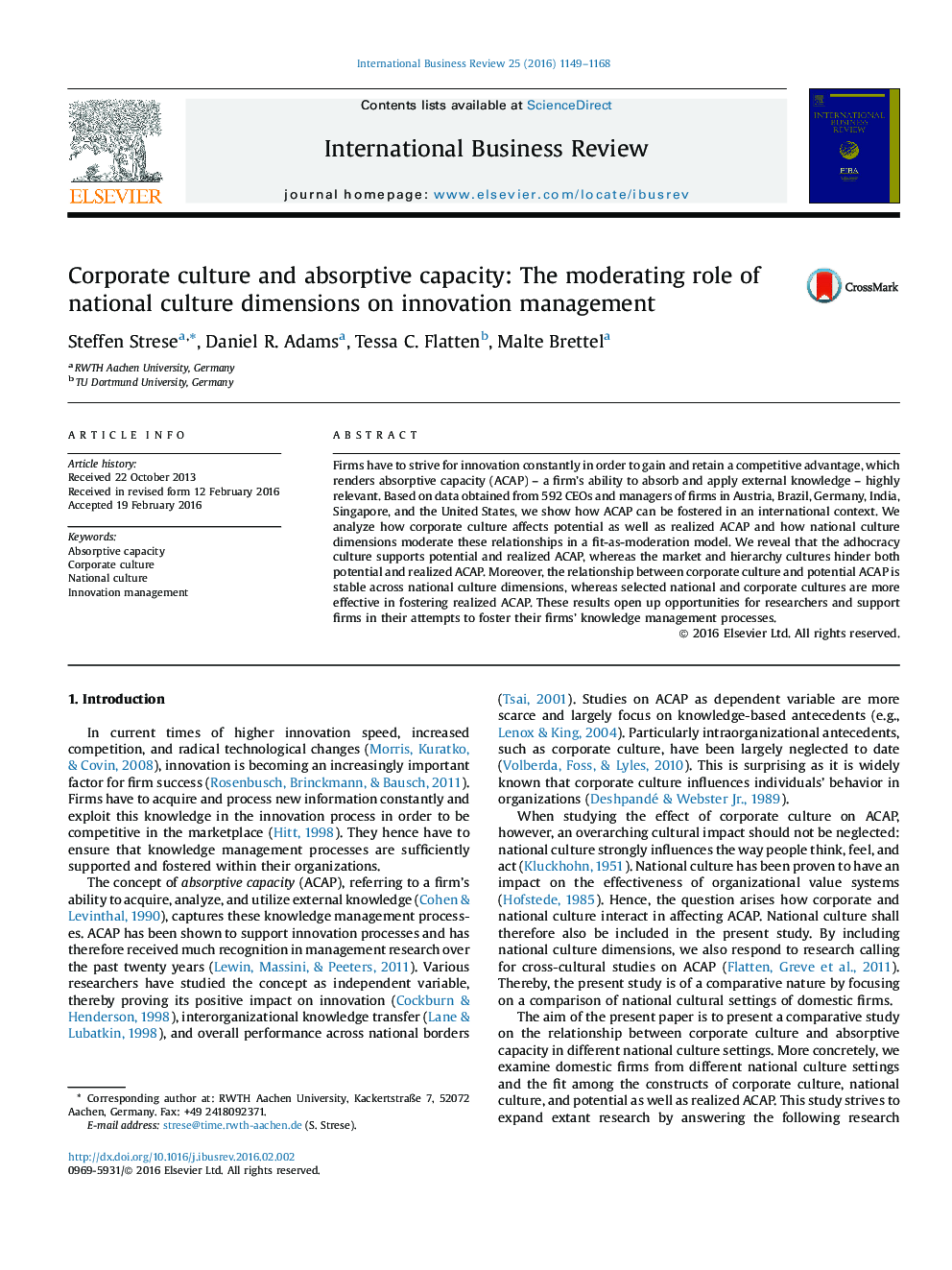| کد مقاله | کد نشریه | سال انتشار | مقاله انگلیسی | نسخه تمام متن |
|---|---|---|---|---|
| 1002421 | 1377558 | 2016 | 20 صفحه PDF | دانلود رایگان |
• We examine the relationships between corporate culture, national culture, and ACAP.
• The entrepreneurial adhocracy culture supports potential and realized ACAP.
• Market and hierarchy culture hinder potential and realized ACAP.
• National culture does not moderate the relationship with potential ACAP.
• Certain national culture dimensions moderate the relationship with realized ACAP.
Firms have to strive for innovation constantly in order to gain and retain a competitive advantage, which renders absorptive capacity (ACAP) – a firm’s ability to absorb and apply external knowledge – highly relevant. Based on data obtained from 592 CEOs and managers of firms in Austria, Brazil, Germany, India, Singapore, and the United States, we show how ACAP can be fostered in an international context. We analyze how corporate culture affects potential as well as realized ACAP and how national culture dimensions moderate these relationships in a fit-as-moderation model. We reveal that the adhocracy culture supports potential and realized ACAP, whereas the market and hierarchy cultures hinder both potential and realized ACAP. Moreover, the relationship between corporate culture and potential ACAP is stable across national culture dimensions, whereas selected national and corporate cultures are more effective in fostering realized ACAP. These results open up opportunities for researchers and support firms in their attempts to foster their firms’ knowledge management processes.
Journal: International Business Review - Volume 25, Issue 5, October 2016, Pages 1149–1168
